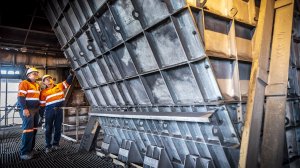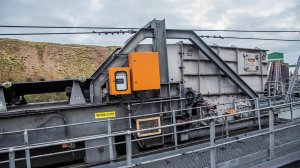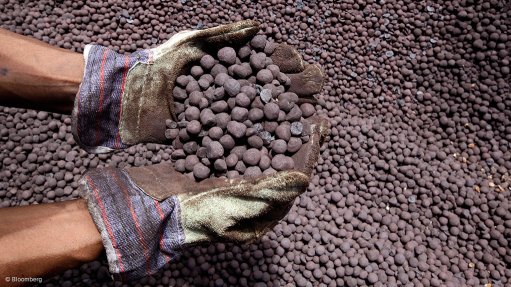Careful chute design can cut coal dust generation

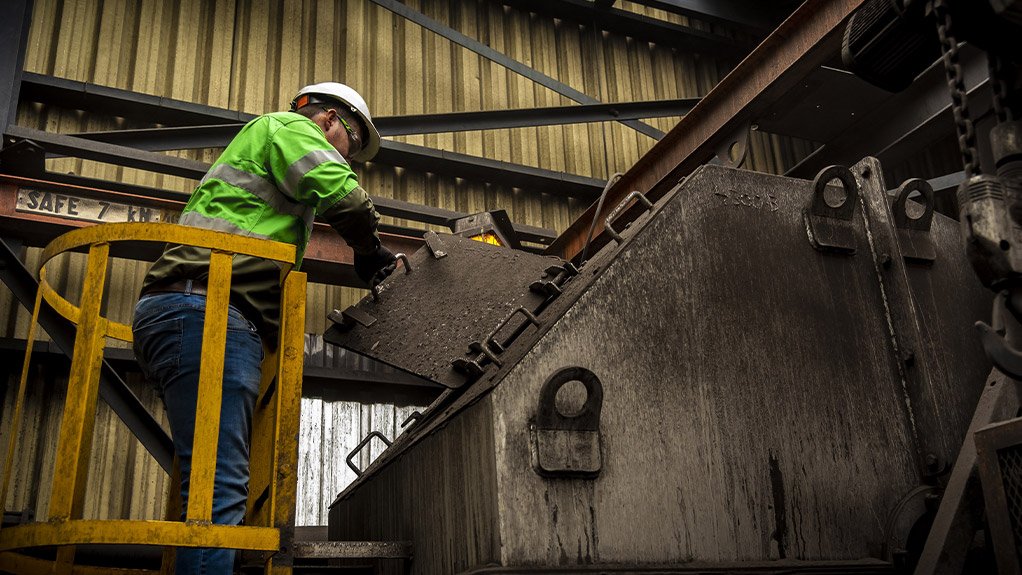

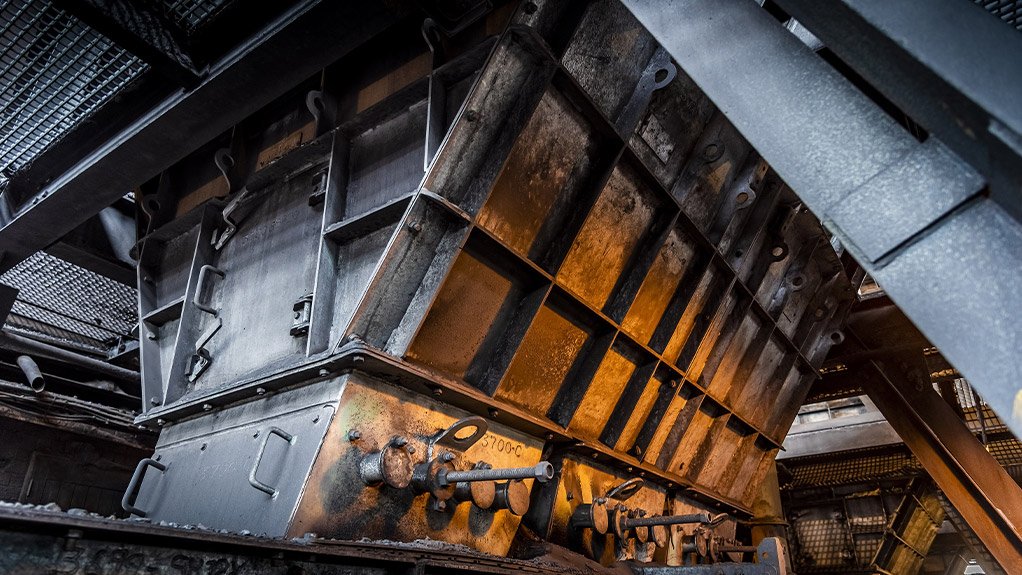

Visual inspection of a transfer chute underway.
Screen underpan onto a conveyor transfer chute at a coal mine in Limpopo.
A screen underpan onto a conveyor transfer chute at a coal mine in Limpopo being inspected by Weba Chute Systems personnel.
Showing a moving head chute installed at a coal mine in Limpopo.
The generation of coal dust around conveyer systems and transfer points is a problem for operators of coal mines, coal plants and similar facilities. Coal dust is a contributor to lung disease and it therefore poses a threat to not only workers in these facilities but even to residents of neighbouring communities. It also poses a safety hazard, as it can spontaneously ignite causing potentially life-threatening fires.
Coal dust also impacts on the efficiency of coal handling systems – and hence productivity and profits. Equipment and machinery can become thickly coated with dust, which increases the need for regular cleaning, while dust ingress into moving machinery reduces its lifespan.
To control the problem, reliance is generally placed on dust suppression and dust extraction systems. While this all well and good, there is a tendency to over-rely on these systems, which results in them doing more ‘heavy lifting’ than they need to and often more than they can manage.
According to Alwin Nienaber, Technical Director of South Africa’s Weba Chute Systems, a globally recognised leader in chute technology, a more effective approach is to focus on the engineering and positioning of the transfer chutes that form an integral part of most conveyor systems.
“This can relieve 50 to 80 % of the problem,” he says. “Suppression and extraction of the remaining dust then becomes a much more efficient component in a broader and more holistic solution.”
He adds that at the heart of any effort to control dust is an understanding of material flow and of the effects of uncontrolled velocity and impact. As he says, “Dust is really just one of a number of unwanted consequences of a lack of control over material flow, including degradation of the material being moved.”
Reinforcing this point, Nienaber’s colleague, Dewald Tintinger, Technical Manager at Weba Chute Systems, notes that most chutes simply provide an open channel for material to fall through, before being discharged onto the next conveyor or outlet. The result is that material can spread in an uncontrolled manner as it travels, which invariably creates much more dust than is necessary.
Tintinger says Weba Chute Systems can provide custom-engineered chute designs which deliberately create a flow path for the material based on its inherent qualities, speed and volume and the throughput requirements of the installation.
“Using sound engineering principles, chutes can be designed to minimise the physical impacts that create dust,” he says. “We base designs on the ‘supertube’ effect, allowing controlled transfer of material onto the conveyor belt. This also reduces wear and tear on the belt.”
To allow it to model the behaviour of material being transported via conveyors and chutes, Weba deploys specialised technology including three-dimensional software. It also verifies its designs prior to manufacture using discrete element method (DEM) simulation.
As a final point, Nienaber says that strategies to control coal dust are best formulated at the design stage and that the earlier Weba Chute Systems is involved, the better the outcome.
“The configuration or general arrangement of equipment within a plant or between structures is important,” he maintains. “In our experience, we have seen the benefit of being able to advise plant designers on the optimal positioning of chutes and related equipment at the planning stage. The result is invariably a sharp reduction in dust creation and a more efficient flow of material.”
Comments
Press Office
Announcements
What's On
Subscribe to improve your user experience...
Option 1 (equivalent of R125 a month):
Receive a weekly copy of Creamer Media's Engineering News & Mining Weekly magazine
(print copy for those in South Africa and e-magazine for those outside of South Africa)
Receive daily email newsletters
Access to full search results
Access archive of magazine back copies
Access to Projects in Progress
Access to ONE Research Report of your choice in PDF format
Option 2 (equivalent of R375 a month):
All benefits from Option 1
PLUS
Access to Creamer Media's Research Channel Africa for ALL Research Reports, in PDF format, on various industrial and mining sectors
including Electricity; Water; Energy Transition; Hydrogen; Roads, Rail and Ports; Coal; Gold; Platinum; Battery Metals; etc.
Already a subscriber?
Forgotten your password?
Receive weekly copy of Creamer Media's Engineering News & Mining Weekly magazine (print copy for those in South Africa and e-magazine for those outside of South Africa)
➕
Recieve daily email newsletters
➕
Access to full search results
➕
Access archive of magazine back copies
➕
Access to Projects in Progress
➕
Access to ONE Research Report of your choice in PDF format
RESEARCH CHANNEL AFRICA
R4500 (equivalent of R375 a month)
SUBSCRIBEAll benefits from Option 1
➕
Access to Creamer Media's Research Channel Africa for ALL Research Reports on various industrial and mining sectors, in PDF format, including on:
Electricity
➕
Water
➕
Energy Transition
➕
Hydrogen
➕
Roads, Rail and Ports
➕
Coal
➕
Gold
➕
Platinum
➕
Battery Metals
➕
etc.
Receive all benefits from Option 1 or Option 2 delivered to numerous people at your company
➕
Multiple User names and Passwords for simultaneous log-ins
➕
Intranet integration access to all in your organisation



